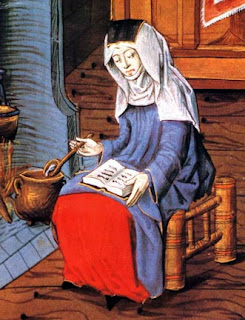I am not blind to the peculiar dangers that beset the English Church. Nevertheless, as a Church it is unique; if suffered to drop out of existence, nothing like it can ever take its place. 'John Inglesant'
[Sorry, the font used on this blog may not display correctly using Internet Explorer.]
Tuesday, January 25, 2011
Anglican Spiritual Patrimony IV
The foundation of Christian life is the liturgy, seen as both Mass and Office, from which flows personal devotion based on the Bible. Neither the Regula nor the Prayer Book have much to say about private prayer except to assume and encourage it: there are no "methods". That the Carolines returned to the principle of liturgy directly inspiring devotion, and strongly insisted on the private use of the Bible, is common knowledge. It is not such common knowledge that "meditation" on the Gospel narrative played an equally large part in the spirituality of Margery Kempe and Julian. On the seventeenth century, C. J. Stranks writes: "Thus the idea of God in the worshipper's mind, when he addressed himself to prayer, was that which he had learned from the Bible. The rare use of a crucifix, or sacred pictures, compelled him to make his own mental image." Whether or not Margery and Julian were thus compelled, they certainly made their own mental images! They had to learn what they could of the Bible from the Dominican and Franciscan preachers (Margery found a priest friend to read it to her) while their religion remained centred on the Mass and the lay Office of Our Lady. Fourteenth-century England plainly needed, and must eventually have demanded, both a common Office and a vernacular Bible: Reformation or not, it is but the logical development of their spirituality.
Martin Thornton, 1915-1986
Subscribe to:
Post Comments (Atom)

No comments:
Post a Comment
Please note: Offensive comments will be edited or deleted.